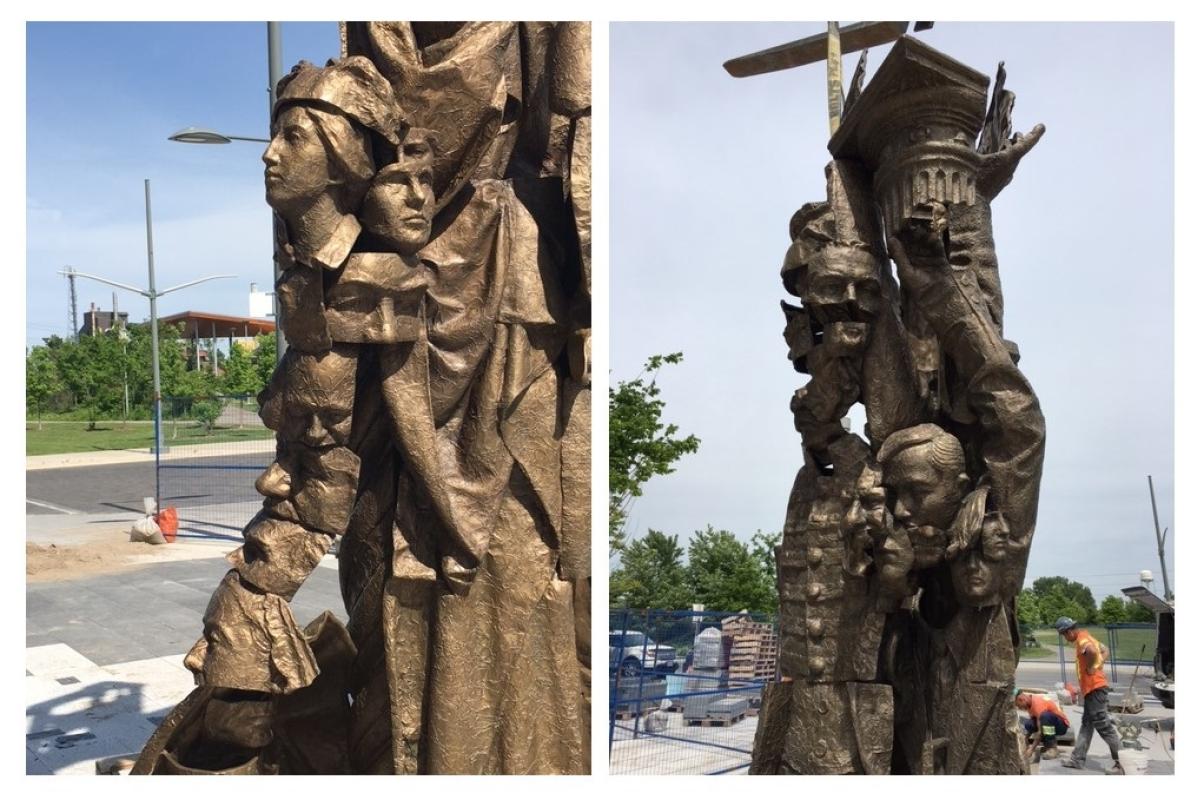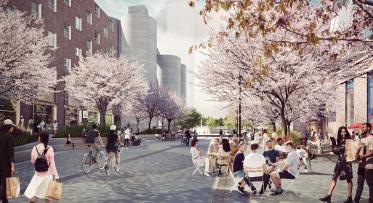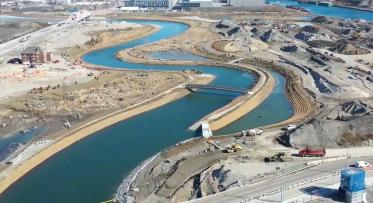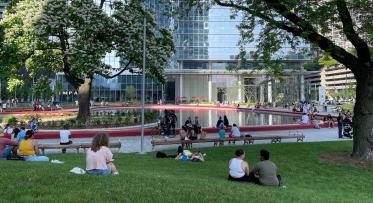West Don Lands Public Art Capped Off With a 19th Century Garden
Detail of Caryatid (left) and Atlas (right), two of the sculptures that compose Garden of Future Follies, by Hadley+Maxwell.
POSTED: JUNE 28, 2016 I PUBLIC ART, PARKS AND PUBLIC SPACES, DESIGN
By: Ilana Shamoon
This past month has been very eventful for me: I assumed the role of Interim Public Art Program Manager at Waterfront Toronto and soon after watched with amazement as the Garden of Future Follies was installed – completing Phase One of the West Don Lands public art strategy. This operatic sculpture garden by Canadian artist duo Hadley+Maxwell subtly references the 2015 Pan/Parpan Am Games, which leveraged the planning already completed for this area and helped accelerate the development of this portion of the neighbourhood.
Garden of Future Follies is an intricate and playful homage to Toronto. It comprises 190 details, collected from over 80 different pre-existing monuments and architectural features from around the city, cast in bronze and composed within seven distinct sculptures. With names like Atlas, Caryatid, and Gargoyle, “all the sculptures are collaged fragments,” say the artists in a recent interview for The Artful City blog series. Hadley Howes continues, “Jack Layton’s smile is one of seven that grace a figure lounging atop a reconstituted mantel from the library at Osgoode Hall; a bell from St. James Cathedral’s famous collection is perched on a cannon from Fort York; while nearby a suitcase from the Memorial to Italian Immigrants acts as a plinth for a collection of hats from various bronze heads.”
Using a cinefoil process, Hadley+Maxwell pressed a thick aluminum foil material against the chosen objects, creating textured imprints of their shapes. The resulting aluminum impressions were subsequently used to create molds for the final bronze versions. In viewing these fantastical collections of details repurposed to form new and cohesive sculptures, we get a glimpse of the wealth of Torontonians’ immediate yet often invisible (or unnoticed) surroundings.
Detail of Threshold, one of the sculptures that composes Garden of Future Follies, by Hadley+Maxwell.
The historic references in Garden of Future Follies continue beyond the sculptures themselves, spilling onto the paved stones upon which they sit. Based upon the footprint of a common mid-19th century Toronto residence, they evoke a specific and familiar domestic space that houses the seven sculptures. The numerous references with the installation question history itself, its hierarchies, omissions, representations, and celebrations.
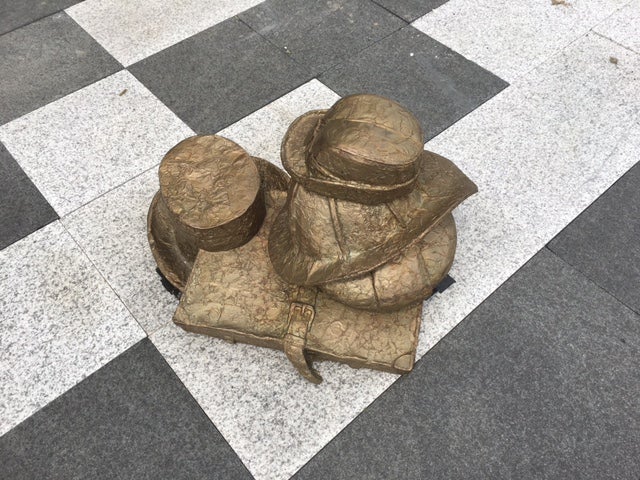
Detail of Memorial, one of the sculptures that composes Garden of Future Follies, by Hadley+Maxwell.
Where have you seen those eyes before? Those gargoyles and that horse? I encourage you all to (re)visit the neighbourhood to see this spectacular installation yourselves!
Garden of Future Follies completes Phase One of the West Don Lands public art strategy. I had a crash course in this innovative strategy and the resulting commissioned works when preparing to co-lead one of a series of tours through the West Don Lands for Doors Open Toronto on May 28 and 29, 2016. Approximately 300 people attended over the course of the weekend, many of whom had never previously visited the area, confirming the interest of Torontonians in public art and in the ambitious revitalization of the West Don Lands. We were thrilled to have such a strong turnout despite the extreme heat!
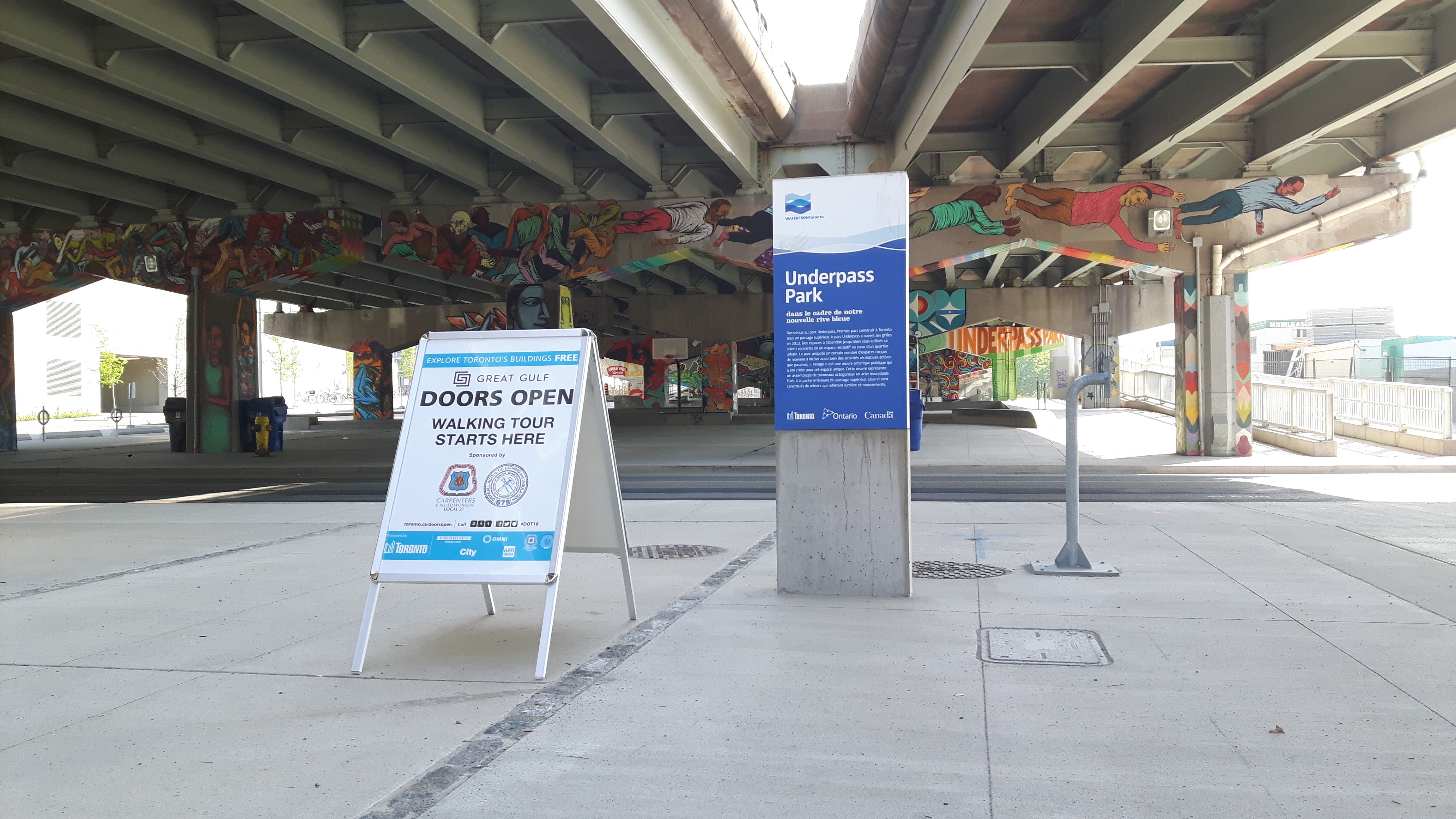
The Doors Open tour began at Underpass Park.
I have long admired Waterfront Toronto’s forward-thinking approach to public art, and in walking from one installation to the next over that weekend, the success of its vision is as obvious as Tadashi Kawamata’s 40-foot-high beacon, Untitled (Toronto Lamp Posts). This owes a lot to the program’s foundation, guided by three main principles that I was happy to share with participants:
- Integrating public art in the early stages of development, as a forethought and not an afterthought.
- Pooling the City-mandated funding contributions for public art from several individual developments in order to create a number of poignant works at high profile sites identified in the planning process. This is a significant departure from the more common practice of privately commissioning independent work on each individual property within an area.
- Conceptualizing our art programs as building collections for our neighbourhoods and responding to the nature of a particular site, its community and a specific artist's practice. There is thus an open curatorial thread running through our public art program.
In considering a public art strategy for a neighbourhood, we ask a series of questions: How has a site been used traditionally and how will its use evolve as it and its surroundings change? How is that use transformed as the day progresses into night? What is a site’s history and how might it be referenced in certain artworks? How can a public art piece appeal to and actively engage viewers of varied ages and interests? What are the conceptual or formal relationships between installations already linked by proximity? All of these considerations are taken into account in selecting a desirable site and art commission. We are excited about giving art a home outside of established venues and creating meaningful ways for people to interact with it in their everyday lives.
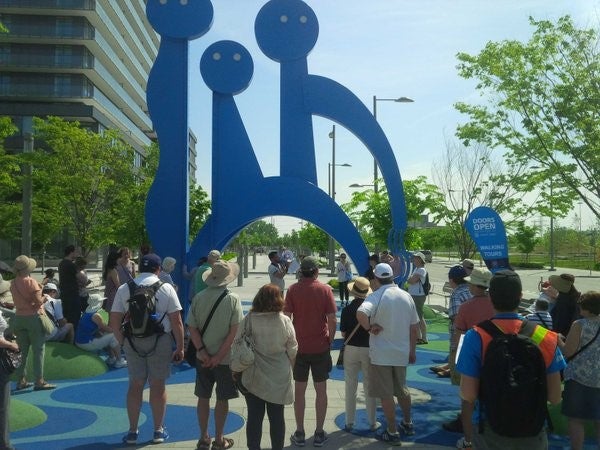
We stopped on Front Street to congregate around Water Guardians by Jennifer Marman and Daniel Borins with James Khamsi.
The public art in the West Don Lands is the epitome of this multi-layered approach. If you missed Doors Open you can take a virtual video tour of the area here. Participants of Doors Open contemplated the links between the works, and were struck by the ephemeral beauty of Mirage in Underpass Park and the striking artistic interpretation of one of the city’s important historical spots in Site Specific. After stopping to admire the newly-opened Cooper Koo Family YMCA – a valuable community hub – we turned east onto Front Street from Cherry Street where there are three consecutive pieces, each on their own block.
We were immediately drawn towards the first piece we saw, Untitled (Toronto Lamp Posts), which invited us to enter this part of the community. With wit and formal ingenuity, the artist selected twenty-nine of Toronto’s street lamps from different periods to create a monumental sculpture, and it has already become a visual landmark for the neighbourhood. We had fun experiencing the both playful and serious Water Guardians; its bouncy ground, bright colors, and geometric shapes were conceived with children in mind, but the adults on the tour were equally excited about this whimsical stop. The brilliant simplicity of the four identical Peeled Pavement pieces along Mill Street, which reference industrial artifacts that capture the energy of the working city, made them an instant favourite. And, many of the participants remembered No Shoes from its previous installation in High Park, and were happy to revisit it fully restored at its new home in Corktown Common. 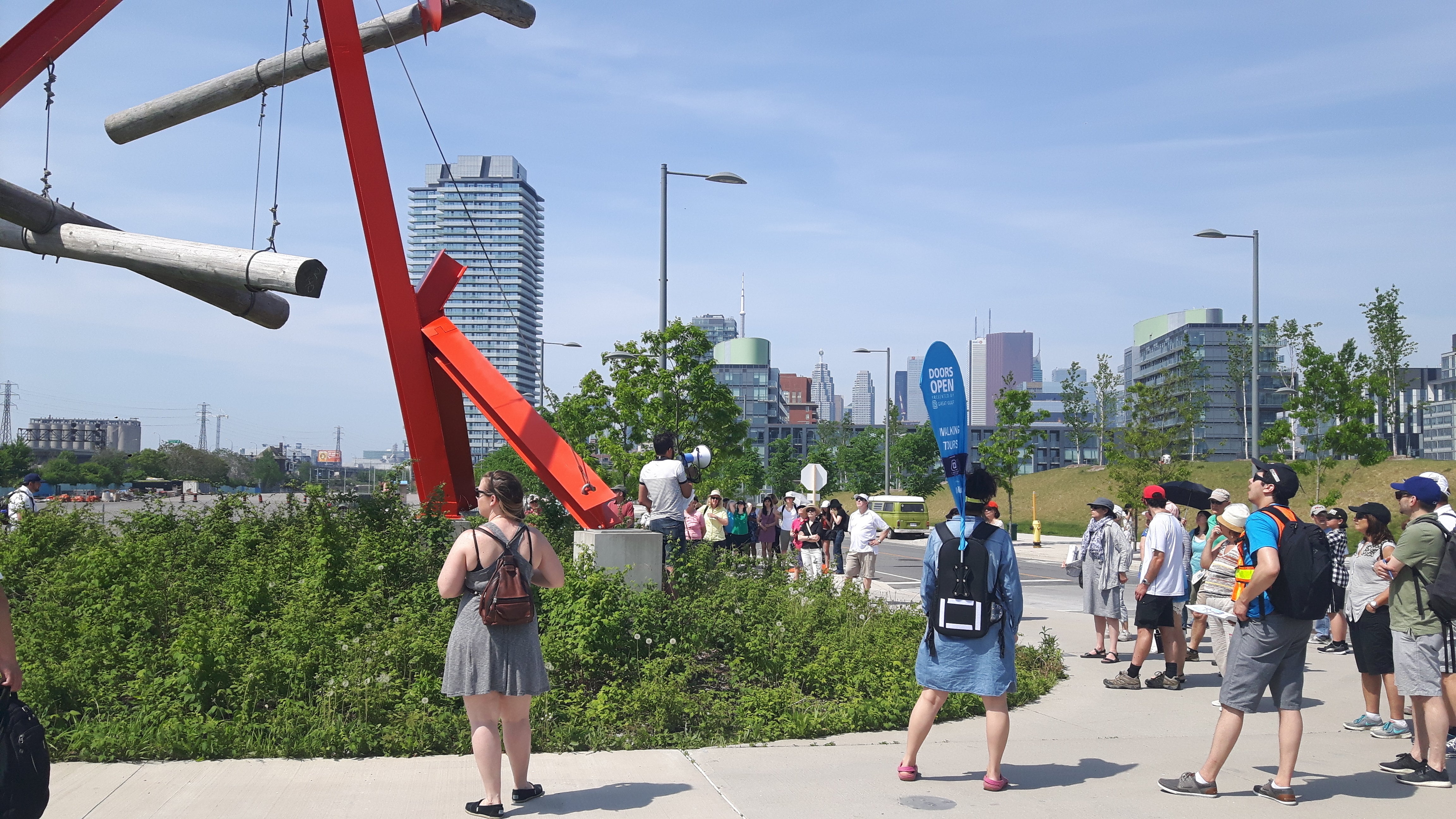
Towards the end of our tour, we walked around No Shoes by Mark di Suvero to look at the slightly swaying beams.
For even more information on each of the public art pieces in the West Don Lands, please check out this blog post.
Share your thoughts, comments and feedback.

